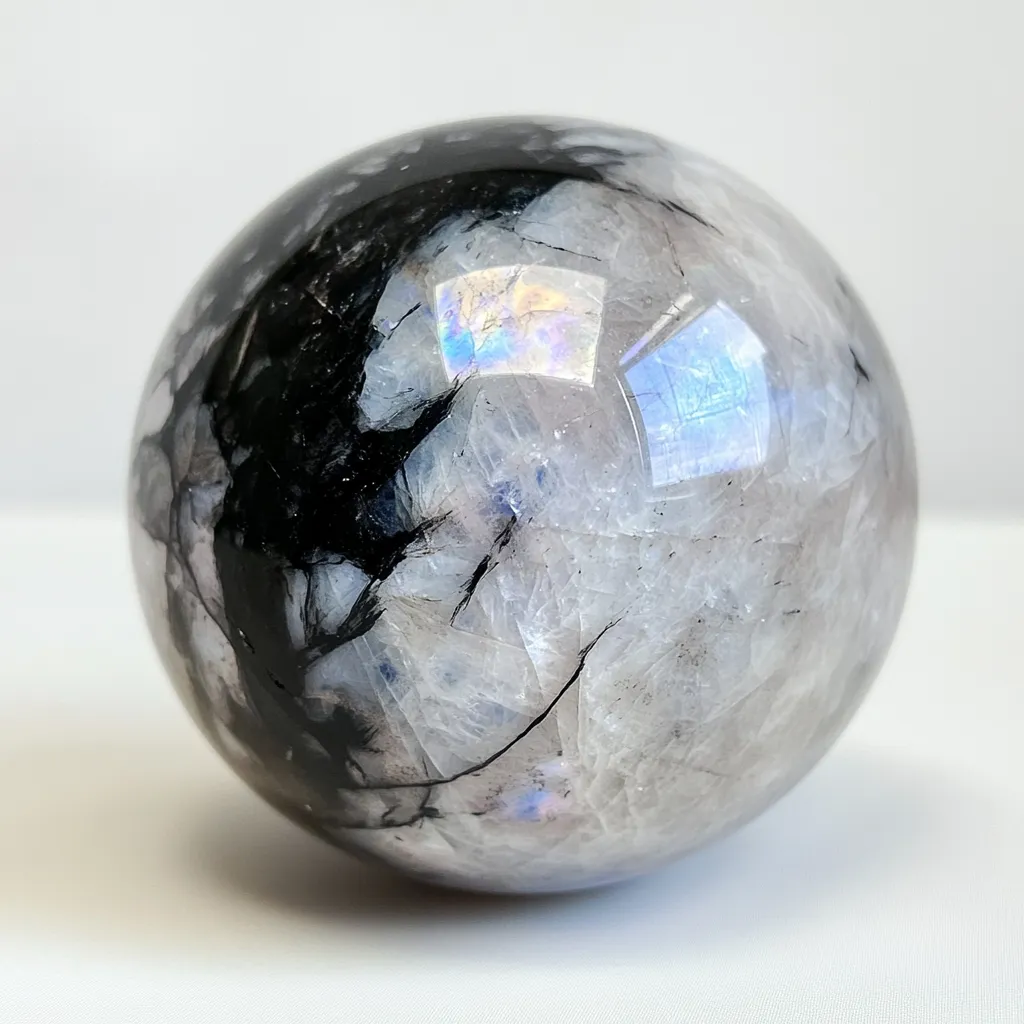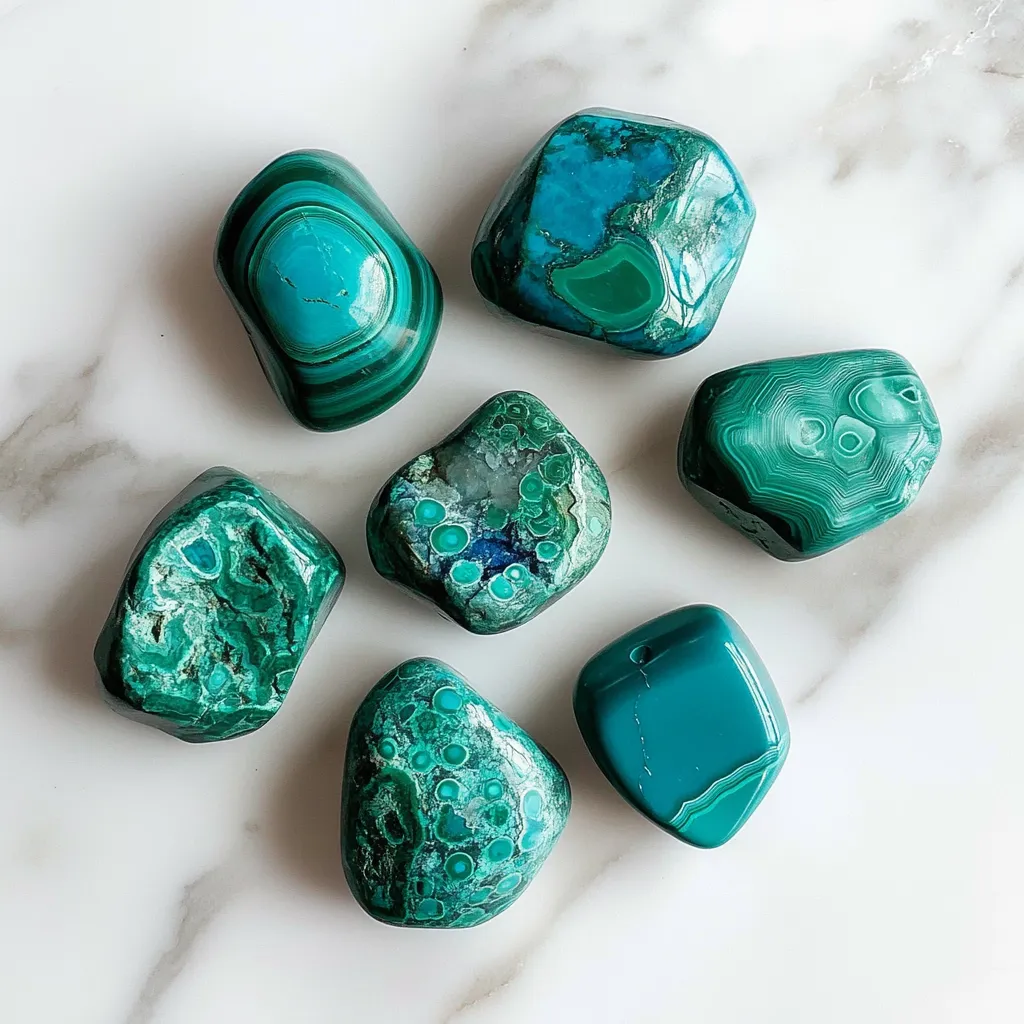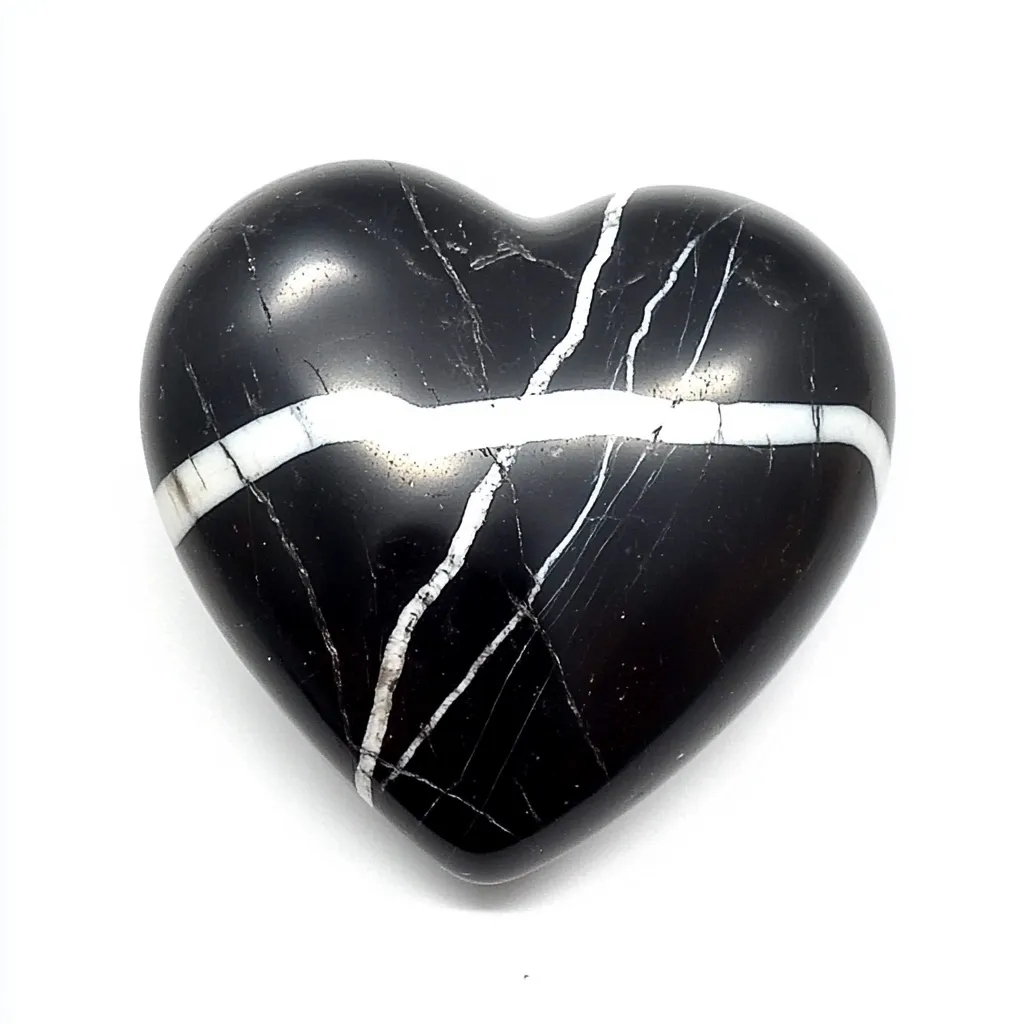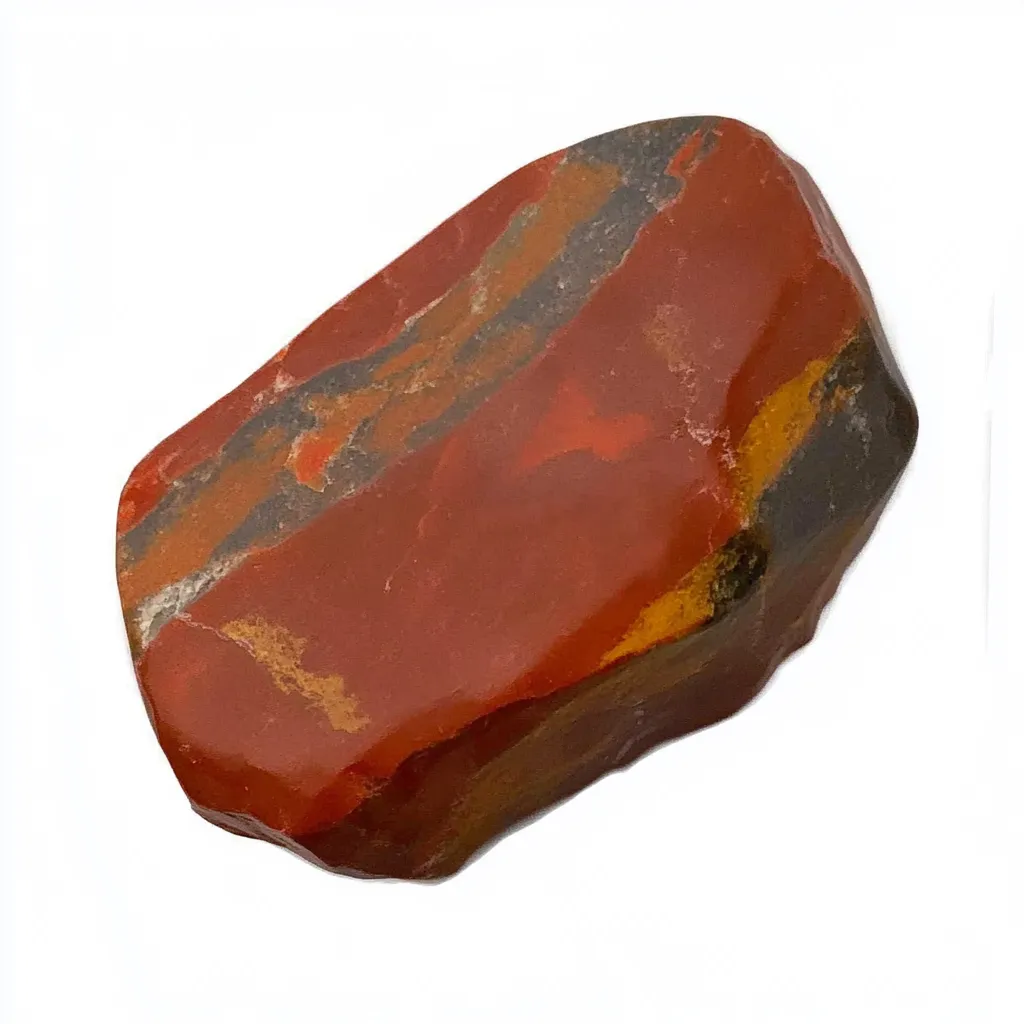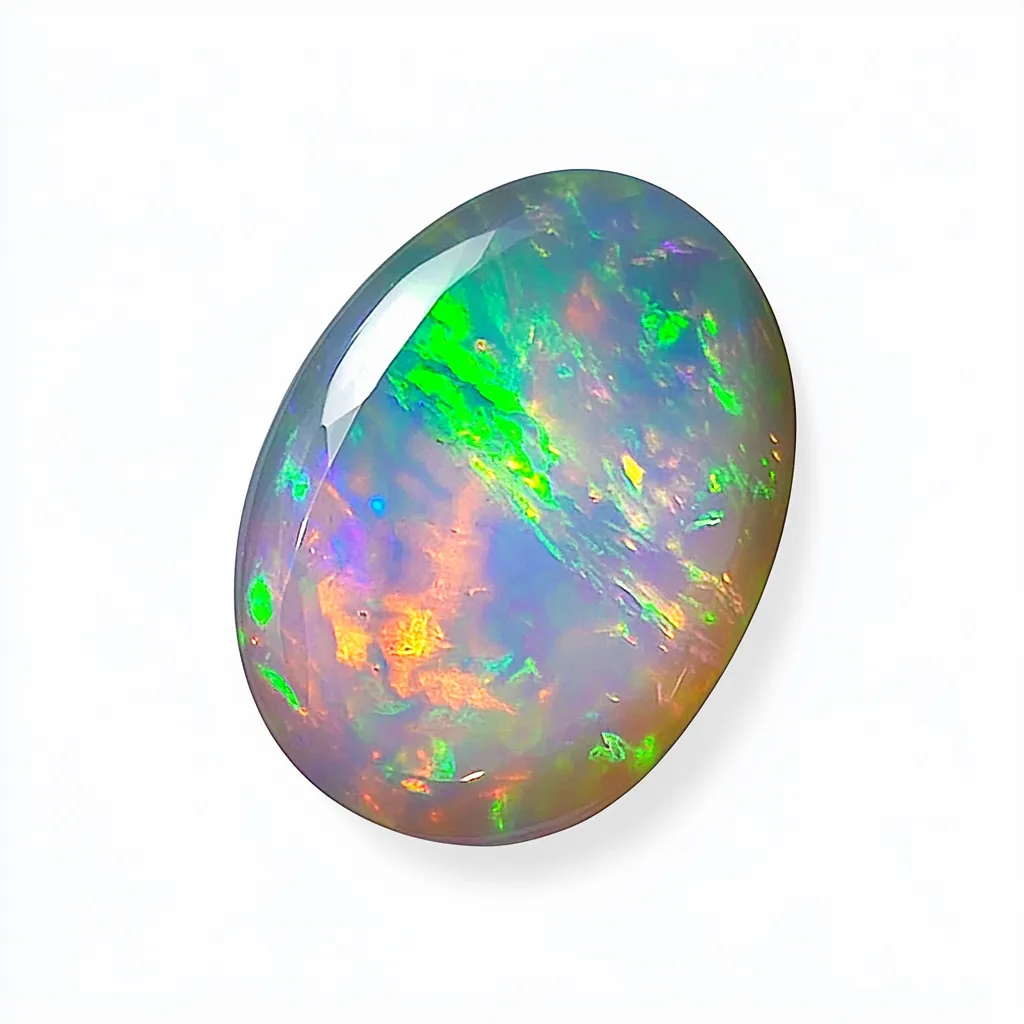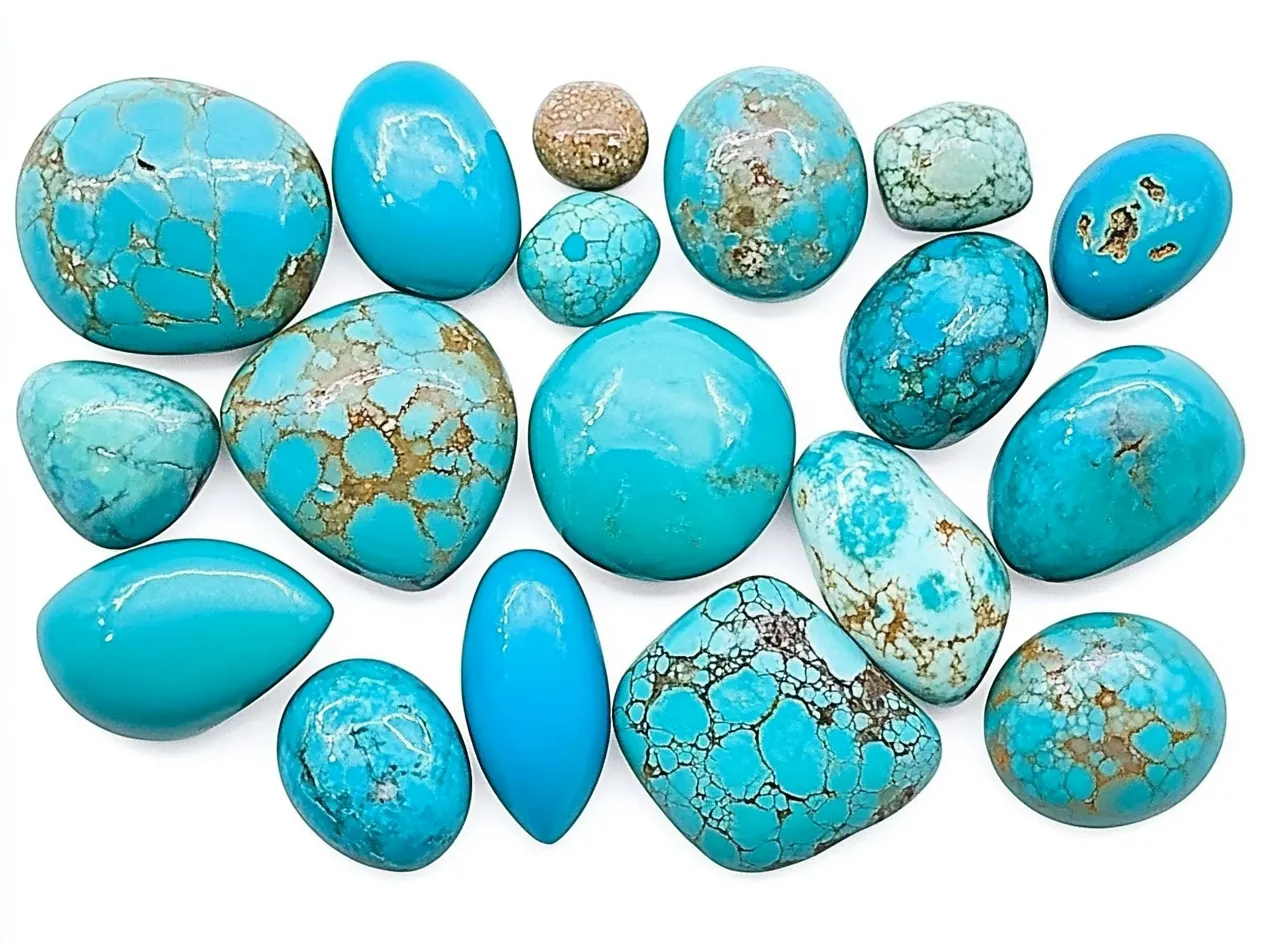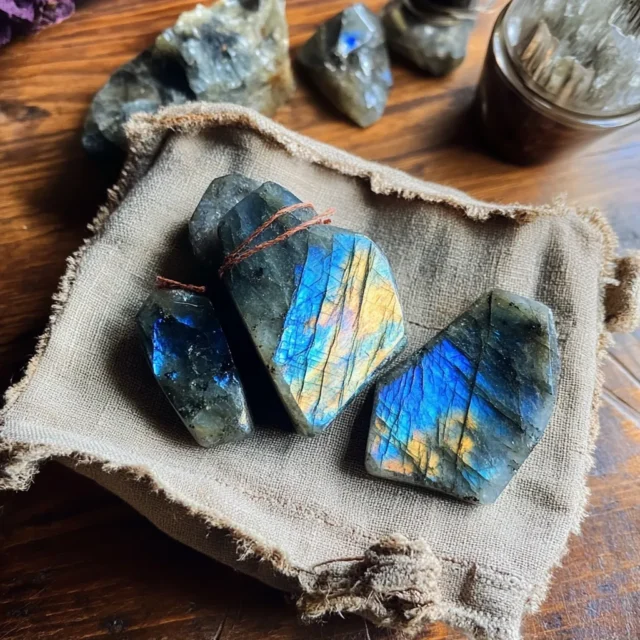

Labradorite Pronunciation:
Pronunciation: LAB-ruh-daw-ryt.
Hardness:
With a rating between 6 and 6.5 on the Mohs scale of hardness, labradorite ranks as a semi-durable gemstone for jewelry. It can take some knocking about and jostling but is still not all that outstanding in the durability department. In everyday wear, it’s definitely more likely to get scratched or damaged compared to more durable stones like sapphires, but it’s as well less likely to chip or crack under stress compared to beads made from some glass substitutes.
Table: Labradorite Durability Comparison
| Gemstone | Mohs Hardness | Durability Rating | Susceptibility to Scratching |
|---|---|---|---|
| Labradorite | 6 – 6.5 | Semi-durable | Moderate |
| Sapphire | 9 | Very durable | Low |
| Glass Substitute | ~5.5 | Less durable | High |
Many are surprised to learn the reasons behind labradorite’s resilience. Its internal structure could make this gemstone very delicate, indeed; the very layers that produce the gemstone’s iridescent color (that stunning labradorescence) could make it fragile. So while it may look like a piece of cosmic armor, labradorite is more akin to a rainbow than a sunbeam: beautiful, yes, but also with the very real risk of a faceplant.
I usually advise clients to approach it with a combination of iridescent enchantment and close-to-the-precipice breakability. Store it wrapped in soft cloth, and don’t expose it to high acids or bases. You could even use it in a magical rite for strength and vulnerability if you wanted.
Lustre:
The true beauty of labradorite lies in its vitreous to pearly luster, which is frequently intensified by a breathtaking optical effect known as labradorescence. This isn’t merely shine; it’s more like a living flame inside the stone. Under light, you might see electric blues, greens, and even golds dancing across its surface, like the northern lights set in stone.
What makes labradorite distinct from other, plainer feldspar minerals is its color play. Indeed, one could argue that this mineral possesses a physicist’s ability to dazzle. Many a mineral collector, myself included, considers each polished labradorite piece almost a unique painting. Who can say, really, that one polished labradorite specimen looks the same as the next? That depth and movement of color give the stone an almost hypnotic presence.
Table: Labradorescence Color Spectrum by Origin
| Origin | Typical Color Flashes | Notable Features |
|---|---|---|
| Canada | Cool blues and grays | Subtle, often muted color play |
| Madagascar | Deep blues and purples | Vivid flashes, highly reflective |
| Finland | Full-spectrum (Spectrolite) | Intense multicolor labradorescence |

Crystal System:
Labradorite is in the triclinic crystal system, characterized by uneven forms and skewed axes. While metals and minerals like gold, silver, copper, and graphite crystallize in the cubic or hexagonal systems and form smooth, regular surfaces, those found in the triclinic system tend toward irregularity—labradorite’s very own artistic allure.
The way labradorite flaws and reflects light is affected by these structural peculiarities. The way its internal structure seems almost haphazard is what makes labradorite flash with color at certain angles—an optical effect that has captured the fascination of gemologists and metaphysical practitioners alike. It’s half science, half magic.
Etymology:
The name labradorite is derived from Labrador, Canada, where it was first discovered in the 1700s. The stone’s beauty had long been appreciated by the Indigenous Inuit people, who called it “fire stone” because of the way it glowed from within.
The name derives from a time when explorers and mineralogists were still busy mapping the planet’s treasures. Knowing this history gives the stone depth: Each piece of labradorite carries with it a legacy that stretches back centuries, across cultures and continents.

Location:
Though its name pays tribute to Canada, labradorite is now procured from various places, including Finland, Madagascar, and the United States. Each locale’s stones possess distinct colors, with Spectrolite, the name given to Finnish stones, the most sought after for its full-spectrum intensity. In fact, the every-which-way-to-lose (! = 3) appearance of this gem only intensifies its allure—this kind of prize is found only at the end of an unexpected journey.
I frequently suggest labradorite from Madagascar to clients who want to see deep blue flashes, while I find that stones from Canada usually have a cooler color palette. When shopping for a lab, ask about the origin. It influences both appearance and value.
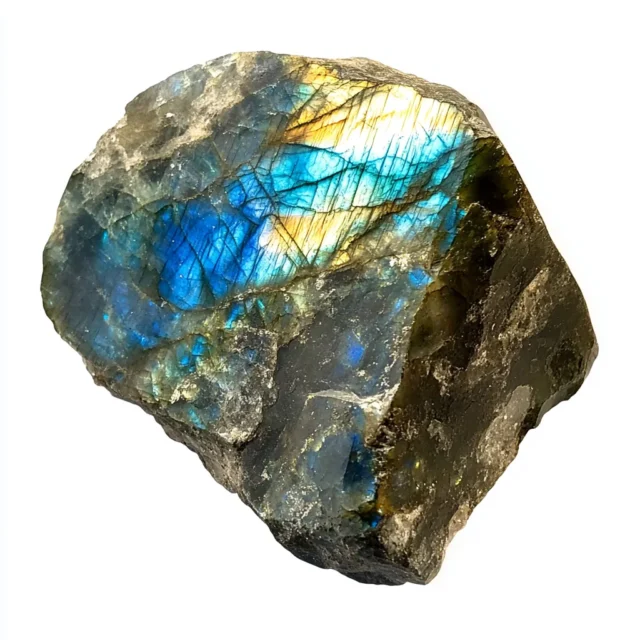
Meaning & Energy
Labradorite is a widely known stone of transformation and protection. For centuries, it has been the go-to stone of healers and energy workers for enhancing intuition, shielding against negativity, and unlocking hidden potential. This stone is frequently linked to the third eye and crown chakras, making it an ideal choice for individuals pursuing spiritual development.
From my experience, I find labradorite to be a sort of quiet mentor. It doesn’t demand attention, but when you hold it during meditation, it’s a calming and steady presence. Some use it to clarify dreams or break through creative blocks. For others, it serves as a reminder to maintain perspective while navigating change.
Could it be magical? Possibly. Is it full of significance? Definitely. Even those who are skeptical generally concede: labradorite carries a sense of something else, something special.

Varieties of Labradorite Stone
Labradorites are not all uniform in structure. The premier variety appears in deep gray with vibrant turquoise flashes; rare types, like Spectrolite, show a full spectrum of color—from red to orange to purple to gold. Yet every labradorite has the same potential for the play of color, or labradorescence, which occurs when light interacts with the stone’s internal structure.
Labradorite Varieties Comparison Table
| Variety | Appearance | Unique Features |
|---|---|---|
| Classic Labradorite | Deep gray with turquoise flashes | Common form, strong labradorescence |
| Spectrolite | Multicolor flashes: red, orange, purple, gold | Rarest type, full-spectrum color play |
| Golden Labradorite | Yellow to golden tones | Sometimes confused with sunstone |
| Rainbow Moonstone | Colorless to white with internal rainbow flashes | Technically a form of labradorite |
You could also encounter golden labradorite (which is sometimes confused with sunstone) or colorless, transparent white labradorite, often marketed under the trade name Rainbow Moonstone. Despite their names, they all share a common feldspar structure. Each variety has its sense of personality, but all of them offer a feeling of something exquisite—almost like you’re holding a piece of the very essence of the northern lights.
Ancient Myths
The stone’s captivating history begins long before it was ever mined or cut. It was probably formed some 1.1 billion to 1.6 billion years ago in the Earth’s mantle, a layer of molten and semi-molten rock beneath the crust. The stuff of that mantle isn’t very different from the material in labradorite. Oceanic crust is mostly basalt, the gray rock that makes up Labrador’s coastal cliffs. And that’s where most of the light and heat from the mantle go…
In other stories, it’s said that shamans from ancient times used labradorite to journey between realms. Whether these are factual accounts or imaginative embellishments, they’re certainly captivating—and they speak to the allure of this very mineral. My wife and I even discovered labradorite’s mythical side ourselves as we looked into the stone’s history and meanings during our travels.

Physical Labradorite Stone Healing Properties
According to crystal healing beliefs, labradorite promotes vitality and is a supporter of metabolism. Some users say it helps in this area and also eases problems with colds or joint pain—but scientific evidence is limited about these effects. For any health-related concerns, always consult a medical professional.
Physical Healing Beliefs Table
| Belief Area | Claimed Benefit | Scientific Evidence |
|---|---|---|
| Vitality Boost | Enhances energy levels and metabolism | Lacks scientific validation |
| Immune Support | Helps with colds and respiratory issues | Anecdotal reports only |
| Joint Relief | Alleviates joint discomfort or stiffness | Not medically confirmed |
However, the healers’ practices may best embody the effects of labradorite on energy. The stone is usually placed on the chest or wrists to align with the body’s energy channels, whose rhythms they are studying. The way labradorite is believed to work is illustrative of how many stones function in the realm of energy healing. Healers see labradorite as a reset button of sorts—a way to clear the energies in and around a person.
Emotional Labradorite Stone Healing Properties
Are you feeling ensnared or intellectually jammed? Labradorite may well become your cherished partner. It is frequently utilized to amplify gut instincts and illuminate the kind of creative problem-solving that—which you’ve probably experienced—can sometimes feel as if it’s just flowing from one half of your brain to the other. At writing and art retreats where I’ve practiced the kind of “spiritual” intimacy with this stone that some folk musicians have with their guitars, I have worn it over my heart chakra in the morning on the way to stupidly open spaces. Indeed, large spaces that feel good to occupy are some of the many gifts that this stone’s energy keeps on giving.
When it comes to emotions, this stone functions similarly to a mirror. It can assist you in facing your inner uncertainties, relinquishing your emotional baggage, and becoming clear about the direction you wish to take. It’s not only a balm; it’s a path to empowerment. Consider it emotional armor that permits the light to penetrate.

Chakra Labradorite Stone Healing Properties
Resonating most strongly with the Third Eye Chakra, the center of insight and inner wisdom, is labradorite. If you seek to amplify your psychic awareness, dream recall, or connection to the spiritual realm, a potent ritual involves placing labradorite on your forehead while you meditate.
It also relates to the throat chakra and assists with honest communication and self-expression. Do you feel tongue-tied? Try holding a labradorite stone in front of a large conversation or presentation. You might be surprised by how the stone clears the air, both physically and energetically.

Questions and Answers
Further Insights on Labradorite
Black Labradorite
Black Labradorite is a captivating and rare variety known for its almost magical appearance. Its typical coloration is deep gray, bordering on black, yet it can also exhibit a near-white color. This stone is part of the plagioclase feldspar family, much like its close relative, the famed Moonstone. With around 39% to 60% of its surface area that is fixed aluminum silicate (or simple labradorite), the remainder is a mix of sodium and calcium. And it really is a mix—both electrically and chemically. When you hold a piece of labradorite, you’re cradling a
Red Labradorite
Red Labradorite, occasionally called “fire labradorite,” garners respect and admiration among crystal enthusiasts and collectors for its apparent lack of beauty and for the presence of red, orange, and amber shades and colors within the stone itself. However, one can often assert that a crystal possesses certain energetic properties! Personally, and with a number of those with whom I’ve spoken about this stone, we find that the red lab holds a strong and confident vibration (as much as any stone that might be found in some common rock formations). If you pride yourself on having creative confidence, then this particular stone may help you reach that peak.
Table: Common Associations with Red Labradorite
| Attribute | Description |
|---|---|
| Color Range | Red, Orange, Amber |
| Energetic Vibration | Strong, Confident |
| Popular Usage | Creativity Boost, Personal Empowerment |
| Alternative Name | Fire Labradorite |
Grey Labradorite
The first impression of grey labradorite may be that of a plain stone, but don’t let that appearance deceive you; it cloaks an entire galaxy beneath its surface. Many people often take the shimmering effect of labradorite for granted, even incorporating it into their models. Using the base upon which that shimmering appearance is often built, I consider grey labradorite the ultimate stone for enhancing one’s intuition and bringing in energies of spiritual awareness. Set in jewelry, or kept as a palm stone, its subtle beauty and calming presence are enough to have it win the title of favorite in my book.
Labradorite Granite
Decorative architecture and countertops primarily use labradorite granite, a captivating, rare rock type. Now, imagine your kitchen surface shimmering with imbedded pieces of labradorite, like those seen in individual gemstones. The thing is, while those are beautiful, this form of labradorite offers the same visual effects on a much larger scale. And with pieces half an inch across and a shiny, smooth surface, this is a way to achieve the same type of effect you’d get on an average-sized countertop… unless you happen to have a fish tank on the same scale as this slant-faced cubic specimen. Both of these were photo ops we couldn’t pass up.
Table: Labradorite Granite Key Features
| Feature | Description |
|---|---|
| Common Use | Countertops, Decorative Surfaces |
| Visual Effect | Shimmering with embedded labradorite pieces |
| Size of Crystal Inlays | Up to half an inch across |
| Surface Finish | Smooth and Polished |
Labradorite Heart
A heart made of labradorite is much more than just a romantic gift. It is that, too, of course—relics of labradorite in and of themselves aren’t worth much unless they are given as gifts. However, a healed heart surpasses a sculpted and polished piece of rock. It’s a symbol of mindfulness. It’s a matter with meaning. It could be with someone every time they nearly decapitate themselves while rolling over in bed at 3 AM (shout out to all my side-sleepers). But that someone, in keeping a labradorite heart near them, could also be keeping peace with themselves. This could be referred to as achieving emotional equilibrium. But all any of this really means, with every glimmer and flash of light, is the sign of a gift with a heart full of light.
Sunset Labradorite
Sunset Labradorite is a name that describes the warm color palette of this variation of labradorite, which ranges from vibrant orange to deep red and gold. The surface textures of a cabochon or any other piece of Sunset Labradorite catch and reflect light in a variety of ways, creating an optical effect that is truly extraordinary. That’s what makes Sunset Labradorite such an eye-catching (and heart-catching) stone, and it’s also what makes the particular piece I’ve chosen to work with right now—Configured for Possibility (you can find more about this piece in my post, Working with Stones). The qualities of hope and possibility are associated with this kind of labradorite.
Moonstone VS Labradorite
Moonstone and labradorite are often confused, and I completely understand why—they shimmer and share feldspar origins. But here’s the key difference: moonstone glows with a soft, milky light called adularescence, while labradorite bursts with vibrant flashes, known as labradorescence. If moonstone is the quiet poet, labradorite is the gem that tells the boldest stories. Associated with feminine energy and new beginnings, moonstone is the go-to for something dreamy and gentle. But labradorite leans into transformation and psychic protection. Want the strength and the mystery of a gemstone? Then reach for labradorite.

